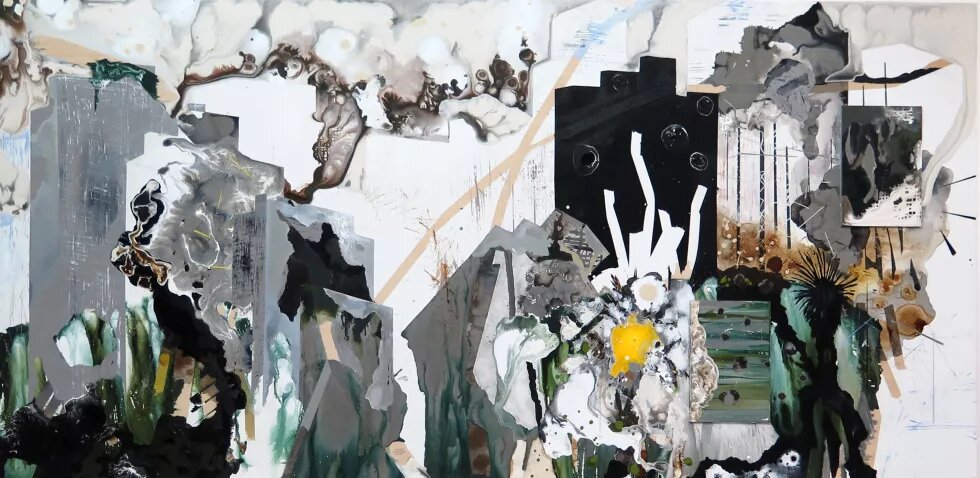
In May 2021, in parallel to Shomer Hahomot, a military operation in Gaza, during the month of Ramadan, and amidst an increase in tensions in Sheik Jarah in Jerusalem, violent riots started to occur across the country. Groups of young Jews and Arabs in Lod, Jaffa, Acre and Haifa, as well as the Negev area and other locations raged through streets and neighborhoods. The cities involved declared curfews and large numbers of security forces entered these locales. The riots lasted for almost 10 days, and resulted in casualties, injuries and damaged private and public property.
A lot has been written about these events and the processes leading to them, yet relatively little attention was given to their gendered aspects, such as the fact that most participants of the riots were young men, Jews and Arabs alike. More so, the reality of Israel's mixed cities in general, and the visible violence of May 2021 in particular, have ample ramifications on women and their lives. This dossier, albeit limited in scope, proposes an additional, complementary framing to the events that goes beyond the analytical lenses of ethno-national, spatial or ideological conflict.
The violent events of May 2021 marked a peak in the ethno-national tension in Israel. The prevailing exclusion of the Arab society from national and municipal decision-making processes, the scope of poverty among the Arab society and of some Jewish communities, the structural lack of opportunities for education and employment, alongside processes of gentrification – institutional or free market driven – with the Israeli-Palestinian conflict in the background, all play a role in intensifying this tension. The institutionally encouraged entrance of religious Jewish settlement groups into Israel’s mixed cities during the last decade deepens the frustration among the Arab community in these localities as well as disempowers long-term and immigrant Jewish communities in the same locales.
The Women and Mixed Cities dossier aims to examine the events through a gender lens. The Israel office of Heinrich Boell Stiftung took an active part during the past two decades in supporting the advancement of UN Resolution 1325, according to which women (and children) are affected differently by violent conflicts, and their active participation in these conflicts and their resolution, is limited. The Resolution created a clear link between the status of women and issues of peace and security and outlined the ways in which violent conflicts are detrimental to women’s lives. A closer look will reveal how different women are affected differently by a given violent conflict. They are also not excluded from the efforts to resolve it in similar ways. Class, ethnic background, economic situation, health, and family status all play a role in women’s ability to cope, defend themselves and others, escape or protest. Women, in general, are underrepresented across political institutions and decision-making processes, while women who belong to minority groups are represented to a lesser extent, and their ability to influence is thus further limited.
The dossier aims to expose the realities of women’s lives in mixed cities. It is hoped that the contents available here will help to incorporate matters of gender in future processes of analysis and decision/policy making for Israel’s mixed cities and areas. It is not assumed that the dossier includes all relevant information or data, but provides an insight to gendered contexts of the events. The dossier includes contributions from Arab and Jewish women activists and researchers, who live or work in Lod, Akko, Nof HaGalil and Haifa:
Dr. Nasreen Haddad Haj-Yahya (Israel Democracy Institute) reviews, together with Ben Fargeon, patterns and trends in employment and education in mixed cities, and the meanings of these patterns to the lives of men and women, and hence families, in Israel’s mixed cities.
Dr. Yael Shmarayhu-Yeshurun (Ben Gurion University) researches mixed cities and analyses the relations between Jewish and Arab women in shared spaces, identifies conflicting and parallel cross-community processes of gendered identification and national power preservation.
Ola Najami-Yosef and Ruth Lewin-Chen (Abraham Initiatives) focus on young men who are out of employment, training and education and the ways the intersection of class and gender is coming to effect among this group.
Samah Salaime (NA'AM – Arab Women at the Center) a social worker, interviews Arab women in Lod and outlines community trauma and emerging changes in their status.
Rachel Banner (The Women's Courtyard, Haifa) shares on the fragility and importance of safe spaces for young women within the larger mixed city context, and the potential these spaces propose in creating resilience and alternative sources of power.
Lital Ayalon (Mahapach-Taghir) describes the unique challenges of Jewish immigrant women placed in mixed cities, and the ways their disempowerment competes with that of their neighbors'.
Reading the short articles provides a complex image of inter and cross community relations in the mixed city space. The images selected are the work of emerging and established women artists, most of them reside and operate in these mixed spaces and areas. The artworks provide complementary reflection and a parallel channel of interpretation of these experiences. More details on each artist and selected artworks are available In the Gallery page of the dossier.
Disclaimer: The articles are a subjective interpretation and analysis of the writers and do not necessarily reflect the positions and opinions of HBS.